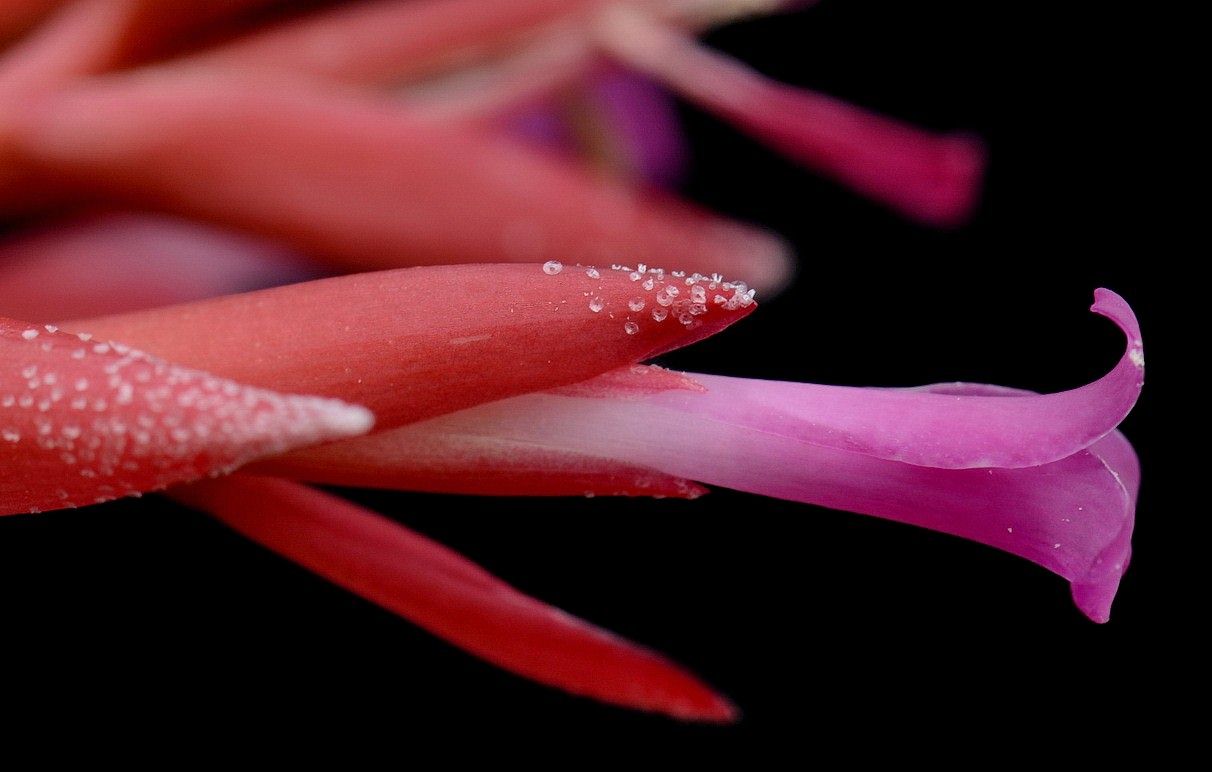
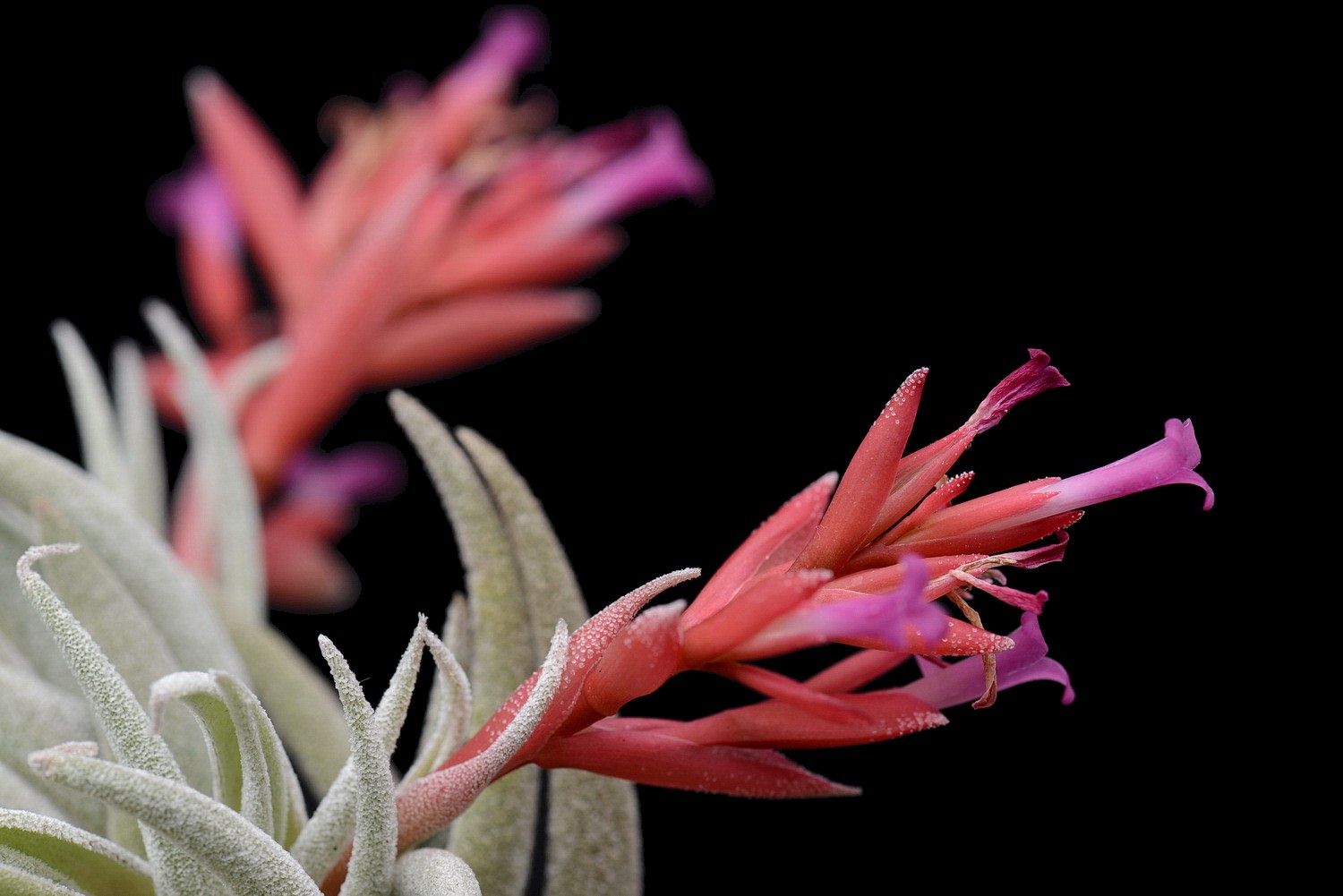
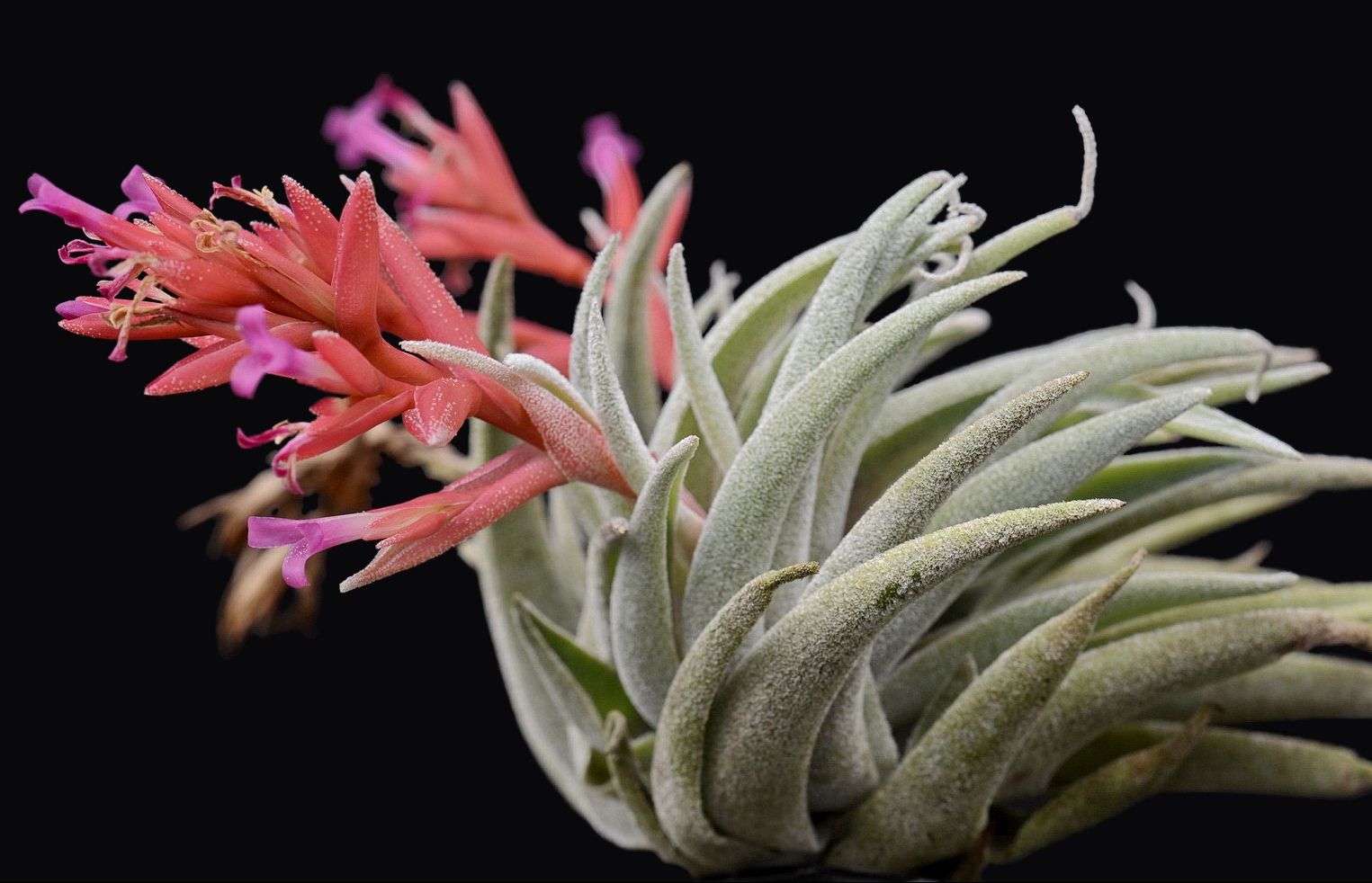
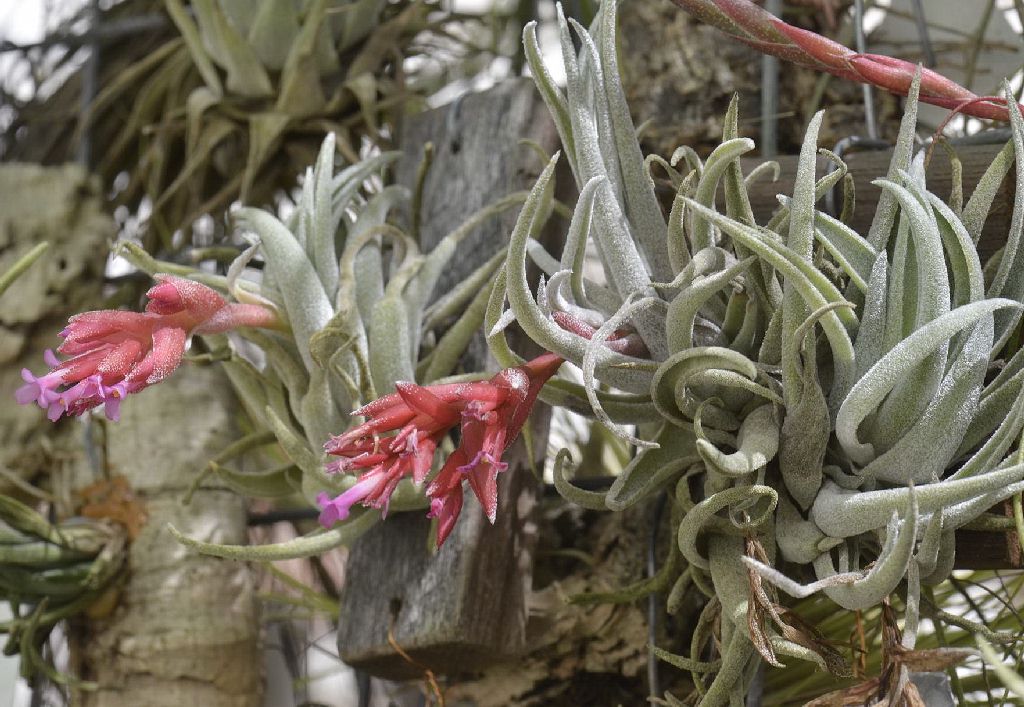
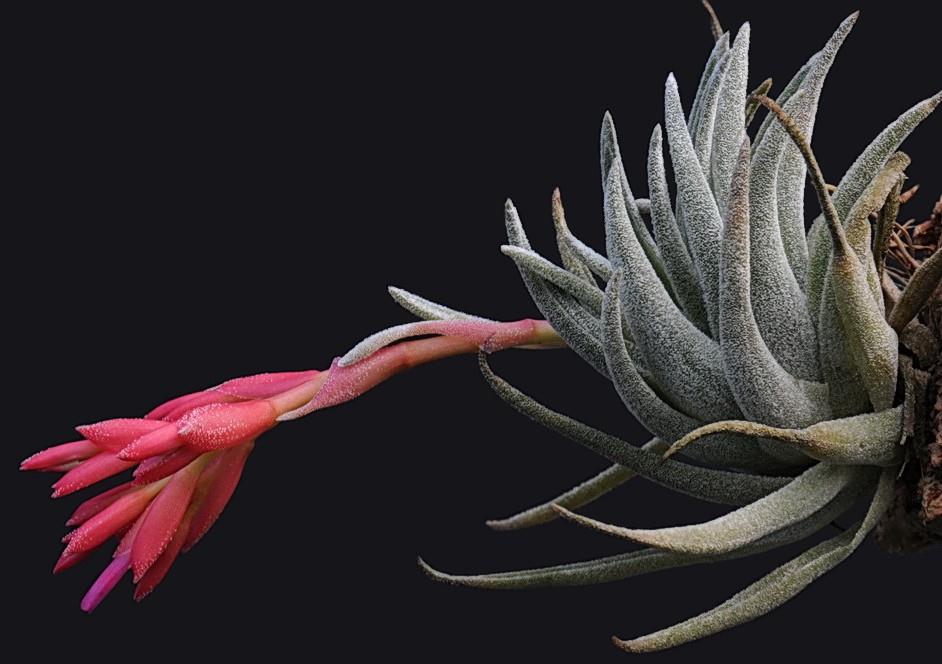
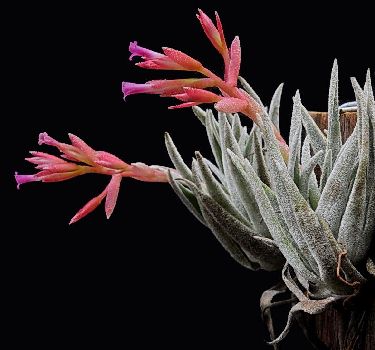

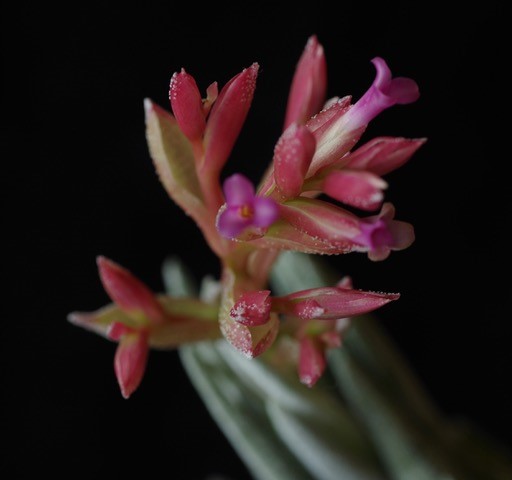
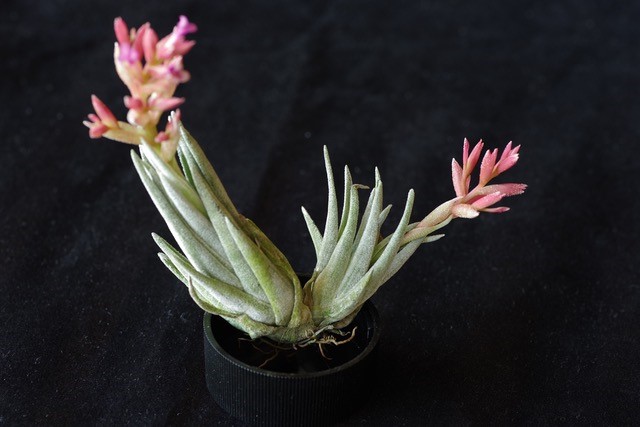

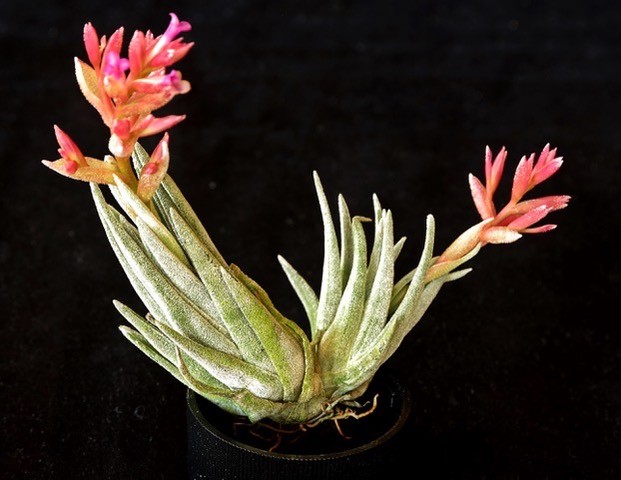
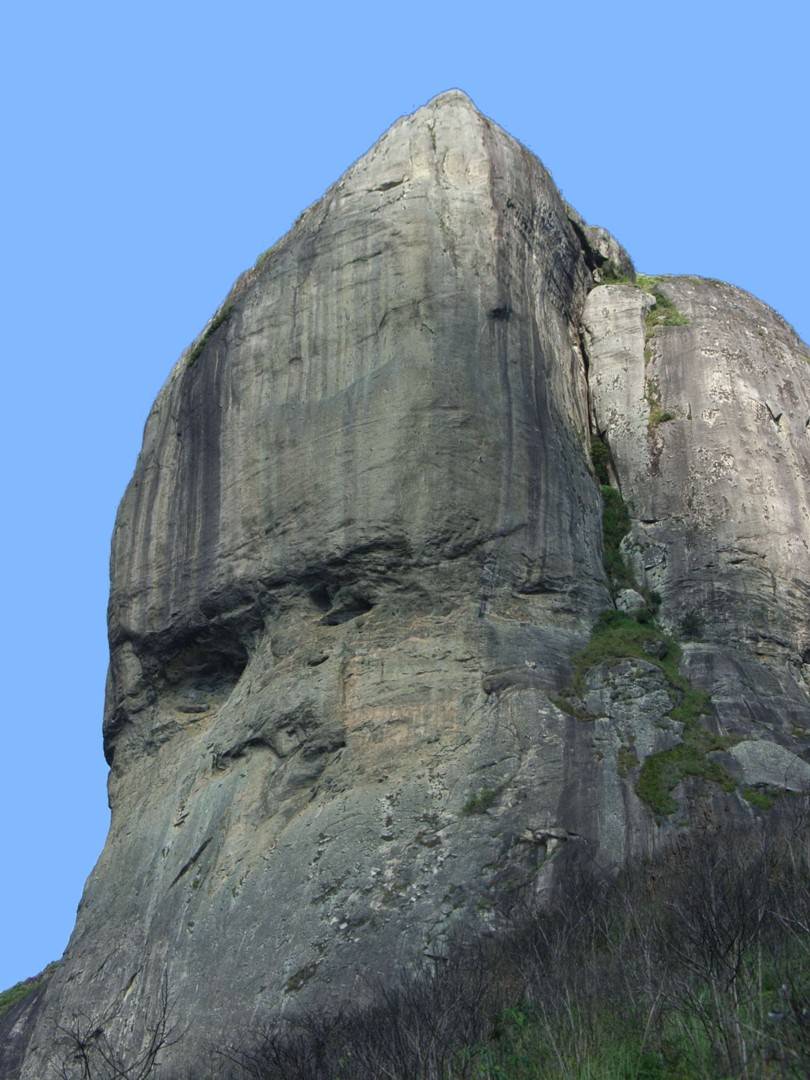


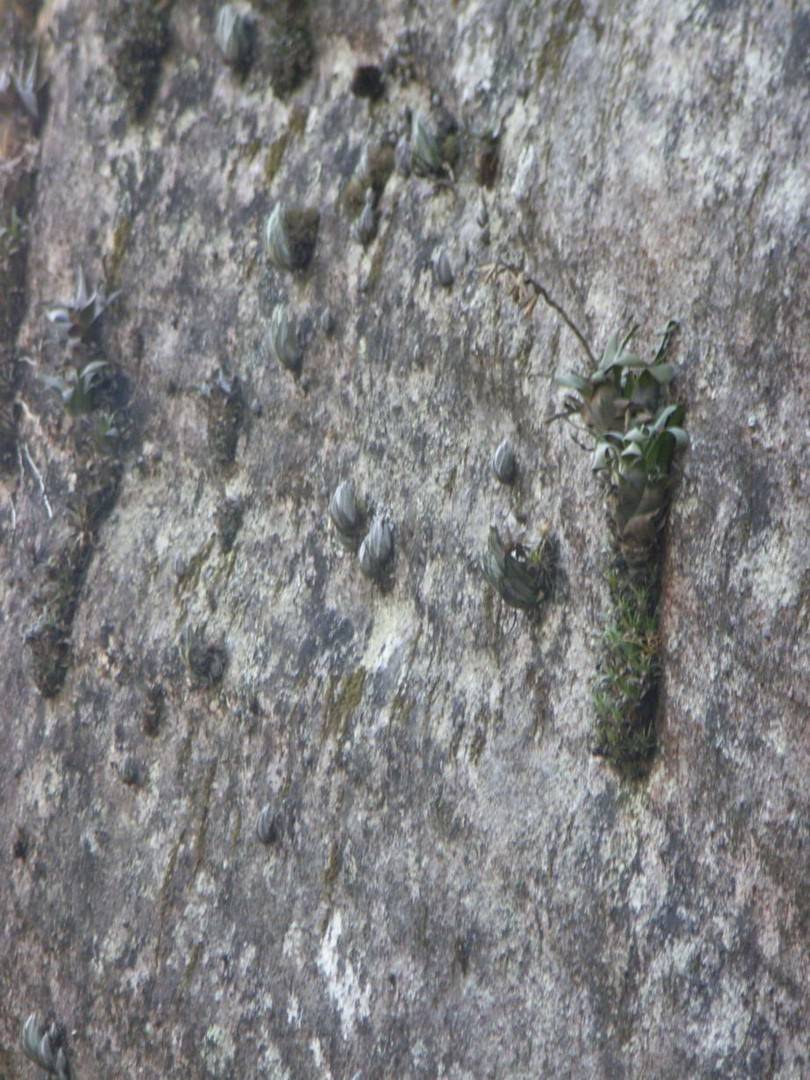

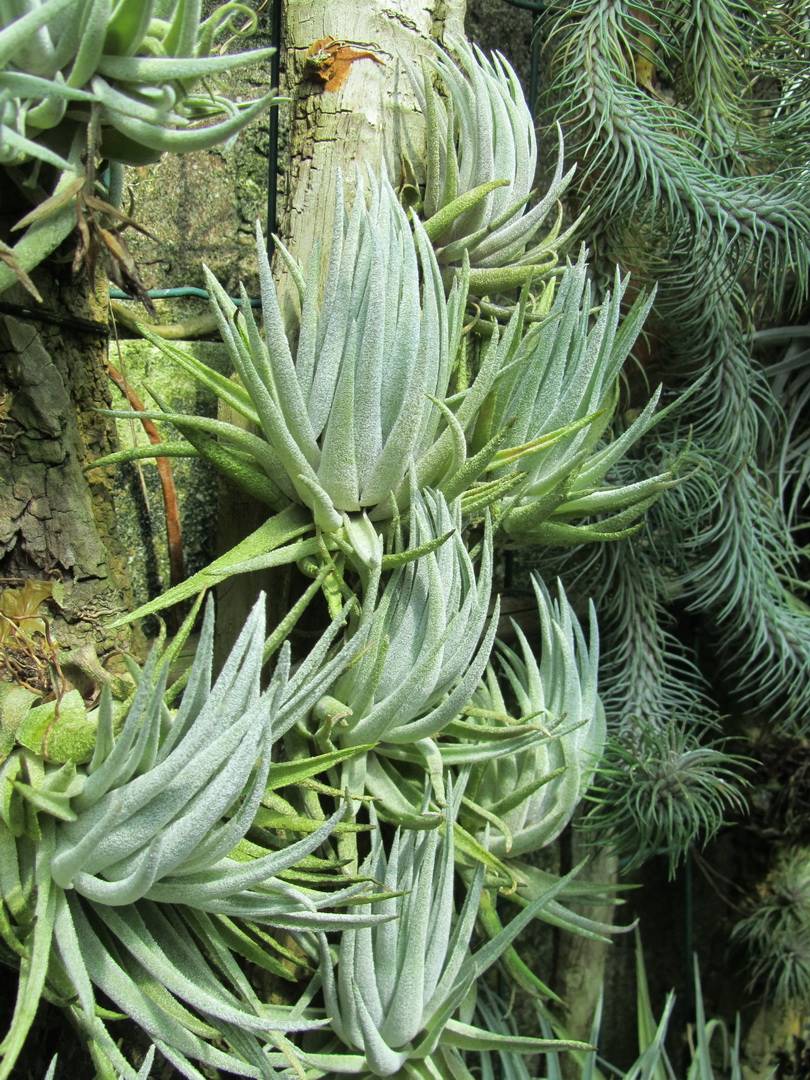
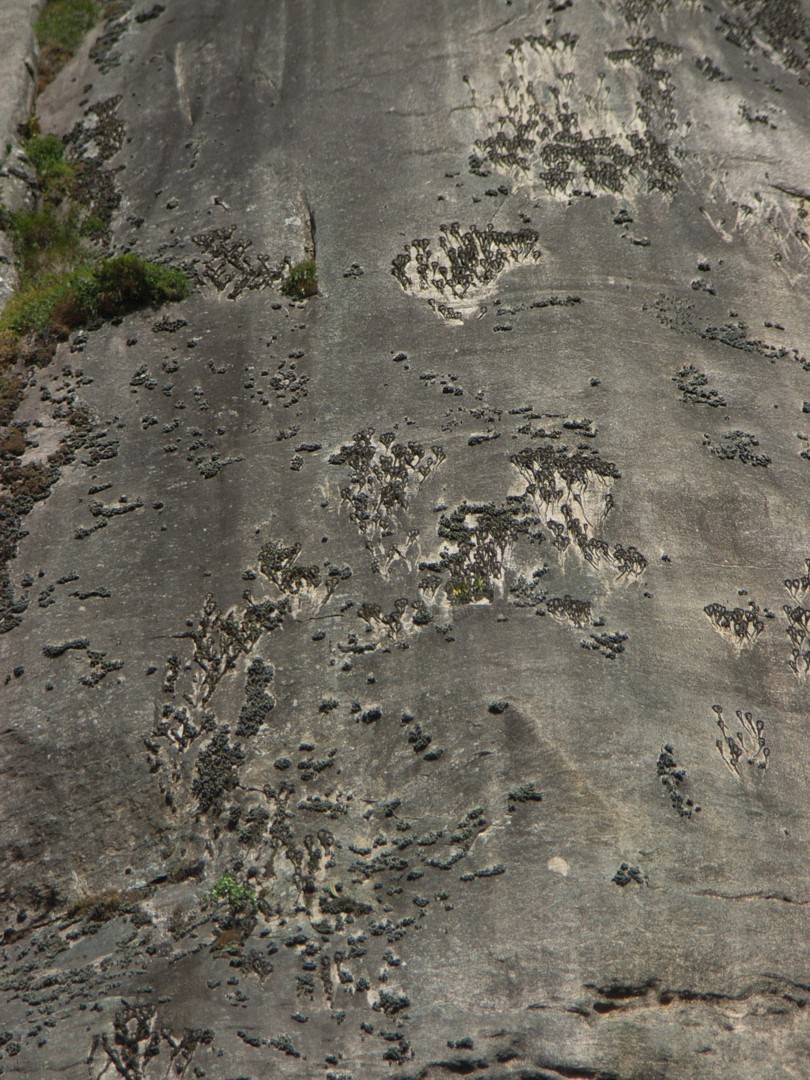
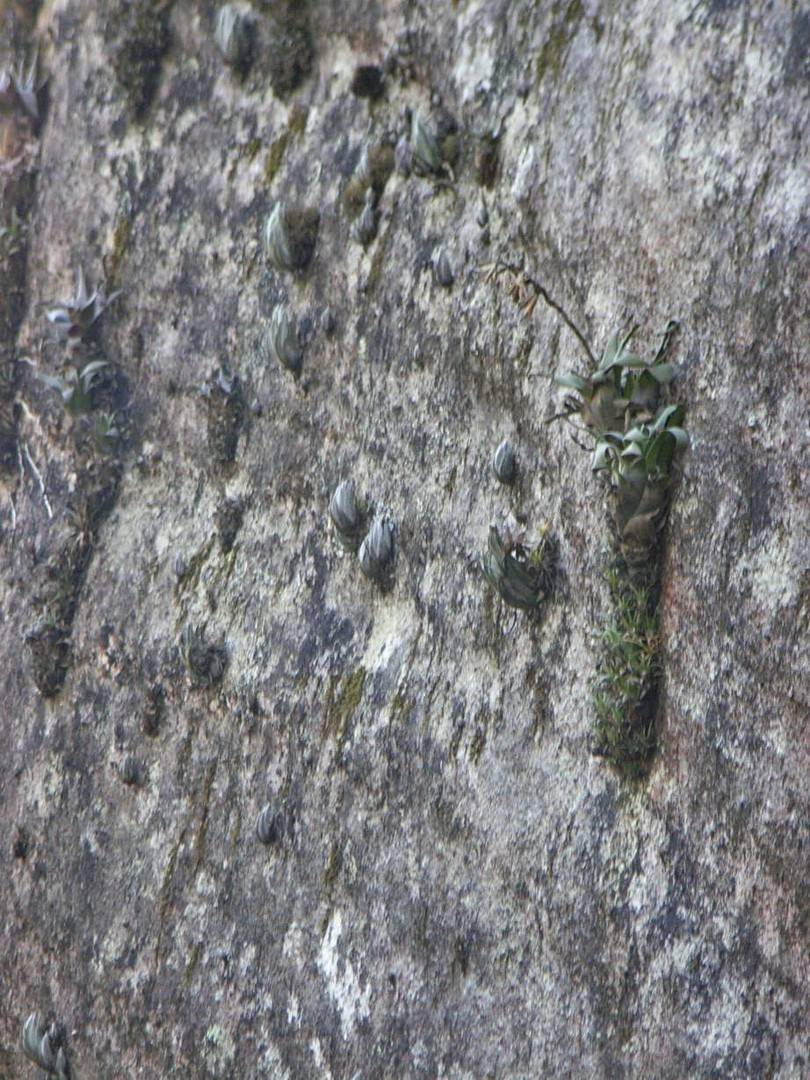
Key to Brazilian Tillandsias, with red or pink petals from Die Bromelie, Sonderheft 3 1996
1. Stamens - exceeding the flower tube => paraensis
- included in the flower tube => 2
2. Leaf blade - filiform and grasslike => globosa
- triangular => 3
3. Plant - 4 - 8 cm in diameter => 8
- 10 - 25 cm in diameter, forming a more or less spreading rosette, stemless => 4
4. Floral bracts - lepidote => 5
- glabrous or nearly so: Plant 6 - 15 cm diameter, inflorescence elliptic or globose, spikes elliptic, sublax with 1 - 3 (- 5) flowers, floral bracts carinate, glabrous or punctulate lepidote, sepals glabrous => roseiflora
5. Inflorescence - elliptic or subglobose => 6
- elongate => 7
6. Leaves - soft, green or reddish, appressed lepidote, spike lax, 2 - 4 flowered, floral bracts shorter than sepals, petals red - violet => geminiflora
- soft, grey, densely lepidote with spreading trichomes, spikes dense, 3 - 12 flowered, floral bracts densely lepidote, exceeding the lepidote sepals => gardneri
7. Leaves - subsucculent, stiff, inflorescence with 4 - 6 spikes => chapeuensis
- Plant only 11 - 13 cm in diameter, an open silvery star-shaped rosette, leaves appressed lepidote, inflorescence with 5 - 7 spikes => grazielae
8. Plant - short - caulescent => 9
- stemless, forming an erect, often subbulbose rosette, leaves often somewhat secund, inflorescence elliptic or subglobose, flowers red or violet, filament not plicate => 10
9. Plant - 3 to 5 cm in diameter, pine cone shaped, dorsiventral, pendant, leaves green, silvery appressed lepidote, inflorescence simple, distichous => reclinata
- 4 to 8 cm in diameter, an erect-secund rosette, the basal leaves recurved, leaves cinereous-lepidote, inflorescence compound, spikes lax, floral bracts carinate, shorter than the lepidote sepals, the posterior ones carinate and 4 mm connate => sucrei
10. Floral bracts - glabrous or nearly so => 14
- lepidote => 11
11. Inflorescence - simple => 12
- bipinnate: Leaves channelled, regularly lepidote with coarse cinereous scales, inflorescence with up to 8 spikes which are laxly 3 - 4 flowered, the posterior sepals carinate, 1/3 to 1/2 connate, lithophytic growing at sea level => brachyphylla
12. Inflorescence - with polystichous flowers => 13
- with distichous flowers: Plant ca. 4 cm in diameter, short caulescent, small pine cone shaped, pendant, leaves grey appressed lepidote => reclinata
13. Leaves - secund, thin and soft, grey with appressed trichomes, looking like grey velvet, scape densely lepidote, inflorescence simple, sometimes compound of up to 3-flowered spikes, floral bracts carmine-red, sepals slightly lepidote, free, posterior ones carinate, petals violet-rose => heubergeri
- Leaves not secund, subsucculent, green, covered with coarse grey scales, plant pendant, floral bracts rose, sepals more lepidote, petals pink => thiekenii
14. Posterior sepals - not carinate => 15
- carinate => 16
15. Leaves many, green-grey, densely lepidote with irregular cumulated coarse trichomes, appearing rough pruinose, epiphytic at sea level => sprengeliana
- Leaves many, narrow triangular, with appressed trichomes, appearing metallic, epiphytic 700 - 1000 m => kautskyi
16. Plant - 2.5 to 5 cm in diameter, rosette of broadly triangular leaves with shorter blade, very densely and regularly silvery subpruinose lepidote, appearing like silvery velvet, sepals carinate and short connate, lithophytic 1800 - 2200 m => organensis
- Plant bigger, up to 15 cm in diameter, rosette often bulbose, leaves grey - green appressed grey lepidote, appearing like grey velvet, bipinnate with 1 - 3 (-5 ) flowered spikes, floral bracts conspicuously carinate, posterior sepals carinate, epiphytic => roseiflora
Comments:
The plant is extremely rare and there are only few examples represented in collections. It is relatively common in its natural habitat, the rock walls however are often hundreds of meters almost vertical and so the plant is well protected from the collectors.
The plants with the name T. brachyphylla currently being grown are likely to be some other small wrong named tillandsias. Another name which has been confused with T. brachyphylla is the so-called T. regnellii which is going to be called now T. roseiflora. "T. brachyphylla" in the second edition of the book "Bromelien" by Werner Rauh and in the Journal of the Bromeliad Society, July /Aug. 1980, title page (photograph by Werner Rauh) and on page 13 of "The Colourful Bromeliads" by Victoria Padilla is in fact now T. roseiflora.